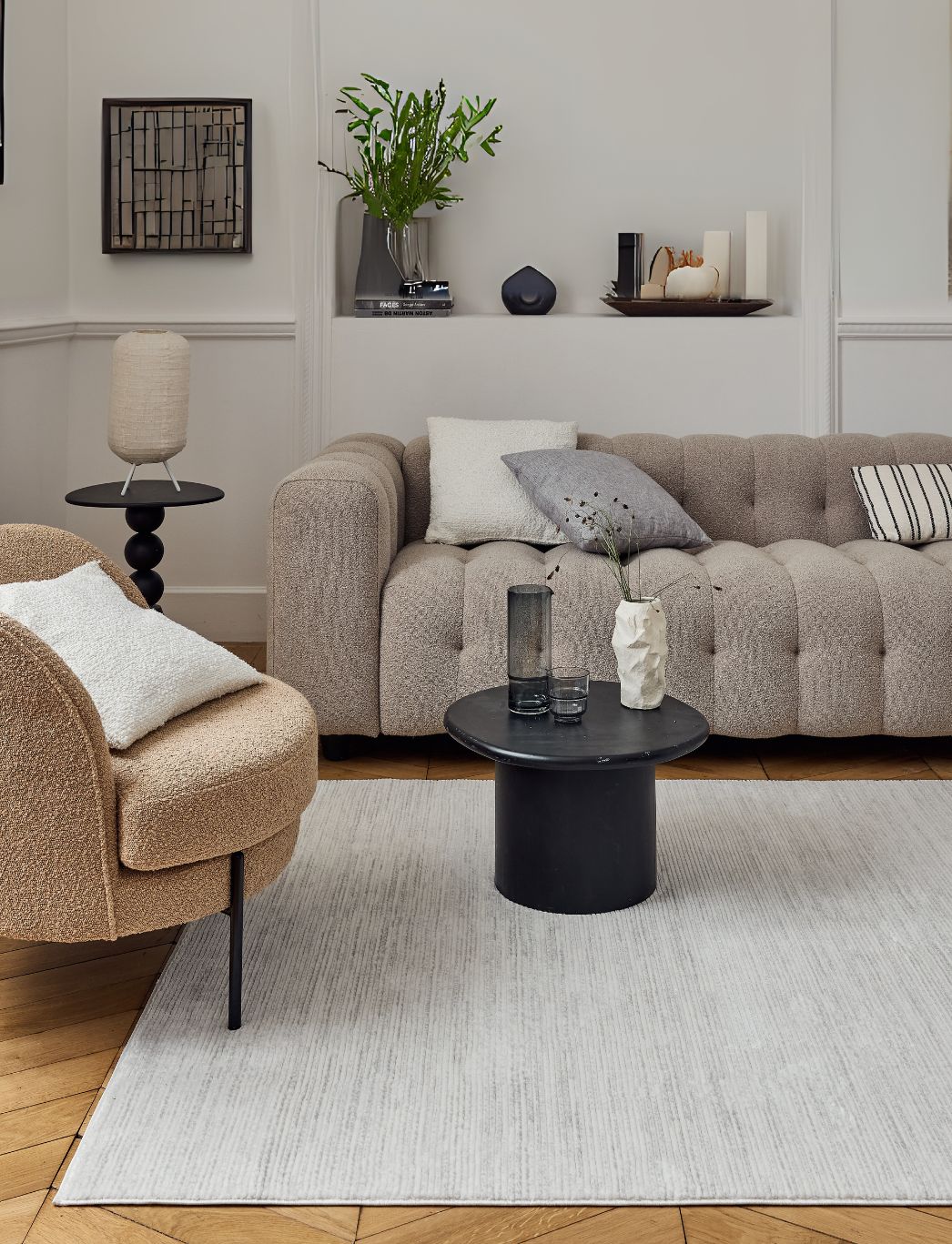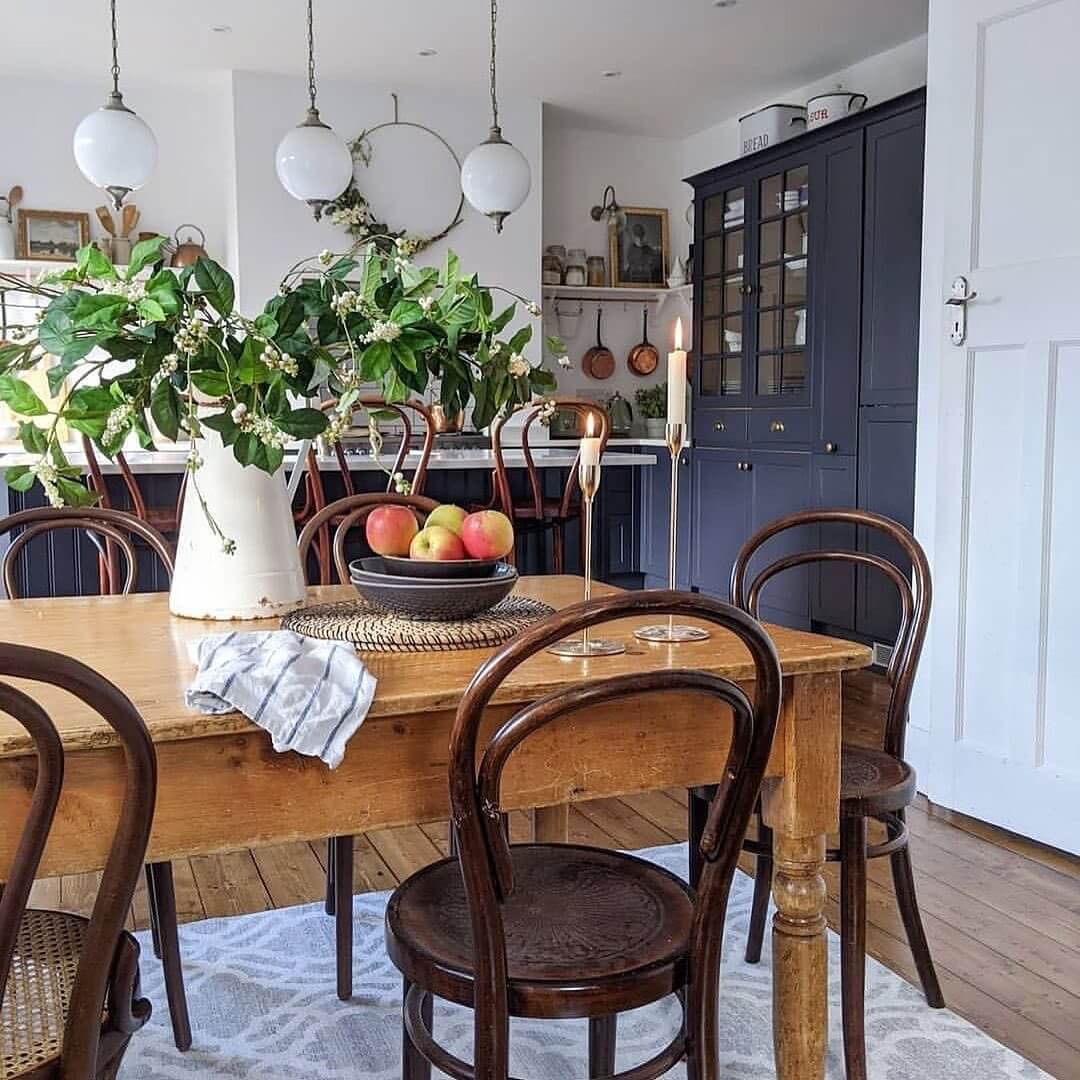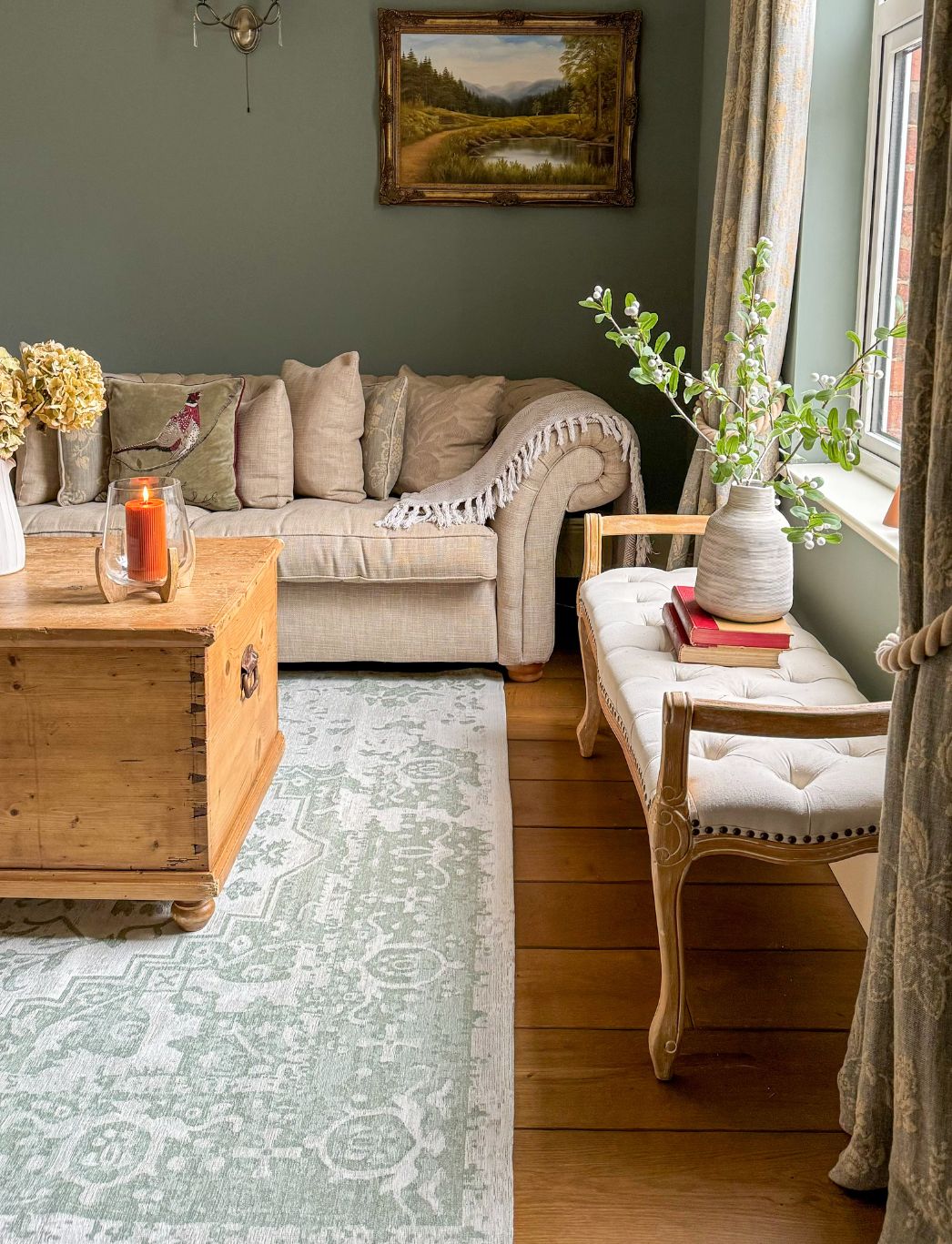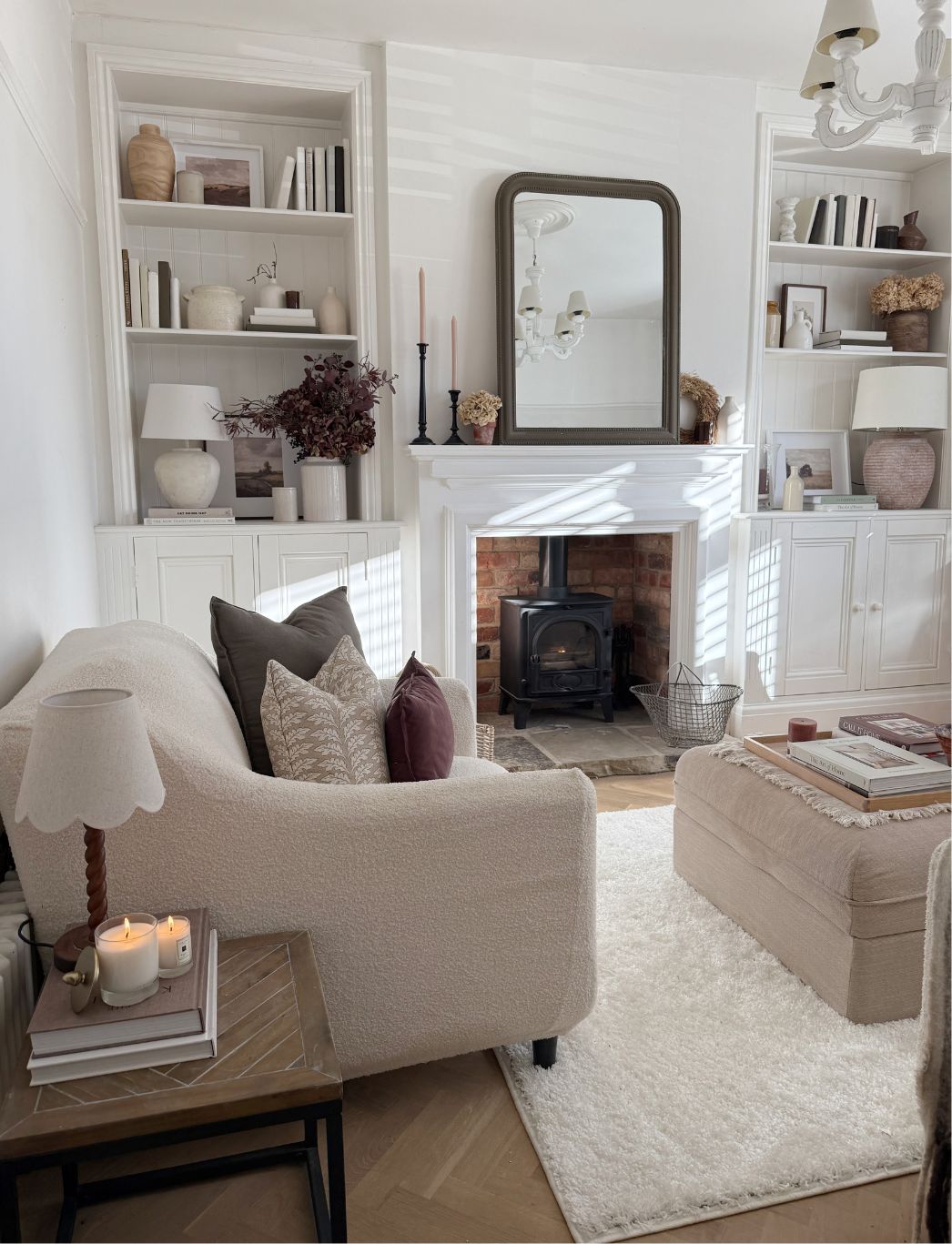Living Room Lighting Ideas and Tips to Make the Space Glow
A living room holds the heart of a home. It is where everyone gathers when you are entertaining, having family time, or just chilling at home. Basically, it is a multipurpose space in the house.
Hence, you could put this space in use however you prefer. Before that happens, you require good living room lighting to illuminate it.
Living Room Lighting Ideas and Tips
Let’s look at some living room lighting ideas to figure out how you can make that area glow.
Determine the Vibe
Now, before investing in living room lighting, deciding what kind of vibe you want your living room to have is important. Some people prefer to make the space appear cosy and warm while some might want the room to be lit up and shining bright like a diamond.
Either way, installing the right light will create the mood you want your space to have.

Consider Dimmer Switches
It is impossible to maintain a single vibe every day. There might be days when you want your casa to be your chilling spot, and there will be times when you want to raise the roof with your friends.
So, how can you use your living room lighting to maintain different vibes?
*Drum rolls*
The answer is: A dimmer switch.

Light Up Every Zone
Usually, people with small living spaces like to divide the room into zones to make it functional for everyone in the house. For instance, your kids might like playing on the big, soft rug on the floor, your spouse could have a little office corner to focus on work, and you might like to read with a (big) glass of wine on your favourite chair.
In this scenario, you need lighting that will work for every person. We recommend a chandelier in the middle of the ceiling so that the kids have enough light to engage in play. A table lamp for your spouse to work comfortably and a floor lamp for you to enjoy a peaceful evening.
Accentuate Your Living Room
Led Lights are an excellent addition to the lighting in your living room, especially if you like displaying art pieces in your home. You can bring attention to the design elements in your living room by using the proper lighting. Additionally, it amplifies the design style of your living space.
Some living rooms have accent walls, and such lighting is the perfect fit to accentuate the interiors.

Layer Up Your Lighting
An open-plan living room will require you to strategize your living room lighting. If you refer to the picture above, the wall lights and hanging lights are brilliantly complimenting each other despite being at a distance.
In fact, the positioning is functional without compromising the look and style of the space. This is an excellent way to layer your lighting. Remember not to overdo it. Another great way to layer your lighting is to focus on zones instead of design elements.

Fancy it up with a Chandelier
As mentioned earlier, living rooms are primarily used as multipurpose spaces. Hence, some people want it to be a cross between a formal and casual place to entertain guests and hang out with the family. Although hard to pull off the balance but there is nothing a good chandelier can’t fix.
They come in a variety of shapes, sizes and designs.
Moreover, the contemporary designs also make the space feel modern and chic. You can also choose to go with a classic. The decision is ultimately yours.

Incorporate Nature through Lighting
Bringing nature into the house is the new it thing. You can install wicker or rattan lights in your living room. They come in different designs and look beautiful in living rooms. It is also an excellent way to make the hanging light a focal point in the design.
Imagine an oversized rattan lamp hanging above a cosy couch with cushions and a comfortable throw. It will escalate the entire look of the room by adding an element of freshness.

Final Note
Living room lighting holds a lot of importance in terms of defining the style. For some reason, we tend to ignore this design element that can turn things around for your living room and elevate the entire space. For more home decor ideas, follow The Rugs.
Living Room Lighting Ideas UK: Brightening Up Your Space
When considering living room lighting ideas in the UK, it's essential to create a warm and inviting atmosphere. Start with layered lighting that combines ambient, task, and accent lighting. Use ceiling fixtures like chandeliers or pendant lights for general illumination, complemented by floor and table lamps for reading and relaxation. Incorporate dimmable switches to adjust the mood according to the time of day or occasion. Additionally, consider LED strip lights along shelves or behind furniture to add a modern touch and enhance the overall aesthetic of your living room.
Living Room Lighting Ideas No Overhead: Creative Alternatives
If overhead lighting isn't an option, there are plenty of creative alternatives to illuminate your living room. Floor lamps can provide excellent ambient lighting while also serving as decorative elements. Table lamps placed on side tables or console tables can create a warm glow and enhance the room's style. Consider using wall sconces to provide additional light without taking up floor space. String lights or fairy lights can add a whimsical touch and can be draped along walls or around furniture for a soft, inviting glow.
Living Room Lighting Ideas Ceiling: Enhancing Your Space from Above
Ceiling lighting plays a crucial role in defining the atmosphere of your living room. Consider installing a statement chandelier or a series of pendant lights to create a focal point. Recessed lighting can provide a sleek, modern look while offering ample illumination. For a more relaxed vibe, consider dimmer switches to control the brightness. Additionally, track lighting can be used to highlight artwork or architectural features, adding depth and interest to your ceiling design.
Living Room Lighting Ideas Low Ceiling: Maximising Height and Light
In rooms with low ceilings, it's essential to choose lighting that enhances the sense of space. Opt for flush-mounted ceiling fixtures that provide ample light without hanging too low. Wall sconces are an excellent choice for adding light without taking up valuable ceiling height. Consider using light-coloured lampshades to diffuse light and create a brighter atmosphere. Additionally, mirrors can be strategically placed to reflect light and create the illusion of a taller space, making your living room feel more open and airy.
Living Room Lighting Ideas Apartment: Stylish Solutions for Compact Spaces
In apartments, lighting can significantly influence the overall feel of your living space. Use multi-functional lighting solutions like floor lamps with shelves or table lamps that double as decor. Wall-mounted fixtures can save floor space while providing essential light. Consider track lighting to highlight specific areas, such as a reading nook or artwork. Natural light should also be maximised; use sheer curtains to allow light in while maintaining privacy. Layering different light sources will create a warm and inviting atmosphere in your apartment.
Living Room Lighting Ideas for High Ceilings: Emphasising Vertical Space
High ceilings offer a fantastic opportunity to create dramatic lighting effects in your living room. Consider installing large chandeliers or oversized pendant lights that draw the eye upward and accentuate the height of the room. Recessed lighting can provide general illumination without detracting from the visual impact of your fixtures. Use floor lamps with tall stems to fill the vertical space and create a balanced look. Incorporating light-coloured walls and furnishings can further enhance the brightness and openness of the room.
Living Room Lighting Ideas: Creating the Perfect Ambiance
When planning your living room lighting, focus on creating a layered approach that combines ambient, task, and accent lighting. Start with overhead fixtures for general illumination, then add table and floor lamps for task lighting in reading areas. Use dimmer switches to adjust the brightness according to the time of day or mood. Consider decorative lighting such as string lights or candles to create a warm, inviting atmosphere. Incorporate natural light through windows and mirrors to enhance the overall brightness of the space.
Living Room Lighting Ideas with Fan: Combining Functionality and Style
Incorporating a ceiling fan into your living room lighting design can enhance both comfort and style. Choose a fan with integrated light fixtures to provide both airflow and illumination. Opt for energy-efficient LED bulbs to keep your space well-lit while saving on energy costs. Consider the fan's design to ensure it complements your decor style, whether modern, rustic, or traditional. Position the fan centrally to provide even airflow and lighting throughout the room, creating a comfortable and inviting environment for relaxation and entertaining.
What type of lighting should be placed in the living room?
Layered lighting is ideal for living rooms. Combine ambient, task, and accent lighting to create a versatile and inviting space.
How to create good lighting in a living room?
Blend natural light with artificial sources. Use a mix of ceiling fixtures, floor lamps, and table lamps to achieve balanced illumination throughout the room.
How do you place can lights in a living room?
Space can lights evenly, typically 24-30 inches apart. Focus on key areas like seating arrangements and artwork for optimal illumination.
What is the lighting standard for living room?
Aim for 10-20 lumens per square foot in living rooms. Ensure even distribution and avoid harsh shadows for a comfortable atmosphere.
What is the best light appearance for living room?
Warm white light (2700-3000K) creates a cozy, inviting ambiance perfect for living rooms. It enhances relaxation and social interactions.
Are LED lights good for a living room?
Yes, LED lights are excellent for living rooms. They offer energy efficiency, long lifespan, and versatile color options to suit various moods and activities.
How many lights for a living room?
The number depends on room size and layout. Generally, aim for 3-4 light sources including ambient, task, and accent lighting for a well-balanced illumination.
What are the 4 types of lighting in a room?
The four types are:
- Ambient (general illumination)
- Task (focused lighting for specific activities)
- Accent (highlighting features)
- Decorative (aesthetic appeal)
How to get soft lighting in a living room?
Use dimmers, frosted bulbs, or lampshades to diffuse light. Incorporate indirect lighting by bouncing light off walls or ceilings for a softer effect.
What lighting is best for inside house?
LED lighting is best for indoor use due to its energy efficiency, longevity, and versatility. Choose warm white for living areas and cool white for workspaces.
Should a living room have a ceiling light?
Yes, a ceiling light provides essential ambient illumination. Complement it with other light sources for a well-rounded lighting scheme.
Should living room have warm light?
Yes, warm light (2700-3000K) is ideal for living rooms. It creates a cozy, inviting atmosphere conducive to relaxation and social gatherings.
Do wall lights have to match ceiling lights?
Not necessarily. While coordinating styles can create cohesion, mixing complementary designs can add visual interest and depth to your living room.
How to make a lighting layout?
- Assess natural light sources
- Identify key activity areas
- Plan ambient lighting first
- Add task and accent lighting
- Consider furniture placement
- Include dimming options
How to position ceiling lights in living room?
Center the main fixture over the primary seating area. For larger rooms, use multiple fixtures or recessed lights to ensure even illumination throughout the space.
Are spotlights good for a living room?
Spotlights can be effective when used strategically. They're great for highlighting artwork or architectural features, but shouldn't be the sole light source in a living room.
How to choose lighting for my living room?
Consider:
- Room size and layout
- Natural light availability
- Color scheme and decor
- Desired ambiance
- Functionality needs
- Energy efficiency
What color light is best for a living room?
Warm white (2700-3000K) is ideal for living rooms. It creates a cozy, inviting atmosphere that enhances relaxation and social interactions.
What makes a living room brighter?
- Light-colored walls and furnishings
- Mirrors to reflect light
- Multiple light sources at different levels
- Higher lumen output bulbs
- Clean windows for maximum natural light
How many lights do you need in a living room?
The number varies based on room size, but aim for at least 3-4 light sources. Include a mix of ambient, task, and accent lighting for optimal illumination.
Should lamps match in a living room?
Matching isn't necessary. Coordinating styles or colors can create a cohesive look, while mixing complementary designs adds visual interest and depth.
Where to put lamps in a living room?
Place lamps near seating areas for task lighting, on side tables for ambient light, and in dark corners to balance overall illumination.
How can I brighten my living room with lights?
- Use multiple light sources at different heights
- Install dimmer switches for flexibility
- Add reflective surfaces like mirrors
- Choose higher lumen bulbs
- Incorporate uplighting to brighten walls and ceilings
How to arrange lights in a room?
- Start with ambient lighting (ceiling fixtures)
- Add task lighting near seating and work areas
- Include accent lighting to highlight features
- Balance light distribution to avoid dark spots
- Use dimmers for versatility
How to create cozy lighting?
- Use warm white bulbs (2700-3000K)
- Incorporate soft, diffused light sources
- Add table and floor lamps for intimate lighting
- Install dimmers for adjustable ambiance
- Use candles or string lights for a warm glow
How to position downlights in a living room?
Space downlights evenly, typically 24-30 inches apart. Focus on key areas like seating arrangements and artwork. Avoid creating harsh shadows or glare.
How to create ambient lighting in a living room?
- Use ceiling fixtures or recessed lighting for overall illumination
- Add wall sconces or uplights to brighten walls
- Incorporate floor lamps with upward-facing shades
- Install cove lighting or LED strips for subtle glow
- Use dimmers for adjustable ambiance
How to decorate a room with poor lighting?
- Use light-colored paint and furnishings
- Add mirrors to reflect available light
- Incorporate multiple light sources at different levels
- Choose sheer curtains to maximize natural light
- Use LED strips for subtle, additional illumination
What is good lighting for living room?
Good living room lighting includes:
- Layered lighting (ambient, task, accent)
- Warm white color temperature (2700-3000K)
- Dimmable options for versatility
- Multiple light sources at different heights
- Energy-efficient LED bulbs
How can I illuminate my living room?
- Install a central ceiling fixture for ambient light
- Add table and floor lamps near seating areas
- Use wall sconces or picture lights for accent lighting
- Incorporate LED strips for subtle, atmospheric glow
- Consider track lighting for flexibility
Where should wall lights be placed in living room?
Place wall lights:
- Flanking artwork or mirrors
- At eye level (5.5-6 feet high) for optimal illumination
- Evenly spaced along longer walls
- Near seating areas for task lighting
- To highlight architectural features
How many lights do I need in my living room?
The number depends on room size, but aim for at least 3-4 light sources. Include a mix of ambient, task, and accent lighting for a well-balanced scheme.
How do you hang lights in a living room?
- Center ceiling fixtures over main seating areas
- Hang pendant lights 30-36 inches above tables
- Position wall sconces at eye level (5.5-6 feet high)
- Use picture lights 6-8 inches above artwork
- Ensure even distribution of light throughout the room
How can I light my living room without overhead lights?
- Use multiple floor lamps for ambient lighting
- Add table lamps on side tables and consoles
- Install plug-in wall sconces for accent lighting
- Incorporate LED strip lights for subtle illumination
- Use uplights to brighten walls and ceilings
Where should lamps be placed in a living room?
Place lamps:
- On end tables next to seating
- On console tables behind sofas
- In dark corners to balance light distribution
- Near reading or work areas for task lighting
- To frame focal points like fireplaces or TVs
How can I make my room beautiful with lights?
- Use layered lighting for depth and interest
- Incorporate decorative fixtures as statement pieces
- Add accent lighting to highlight artwork or plants
- Use warm white bulbs for a cozy ambiance
- Install dimmers for versatile mood lighting
Which color light is best for a living room?
Warm white (2700-3000K) is best for living rooms. It creates a cozy, inviting atmosphere that enhances relaxation and social interactions.
How many lumens do I need to light my living room?
Aim for 10-20 lumens per square foot in living rooms. For a 250 sq ft room, you'd need approximately 2500-5000 lumens total from all light sources.
What is the best light appearance for living room?
The best light appearance is warm white (2700-3000K). It creates a cozy, inviting atmosphere that enhances relaxation and social interactions.
How to make living room cozy lighting?
- Use warm white bulbs (2700-3000K)
- Incorporate multiple light sources at different heights
- Add dimmers for adjustable ambiance
- Use lampshades to diffuse light
- Include candles or string lights for a warm glow
Are LED lights good for a living room?
Yes, LED lights are excellent for living rooms. They offer energy efficiency, long lifespan, and versatile color options to suit various moods and activities.
What are the 4 types of lighting in a room?
The four types are:
- Ambient (general illumination)
- Task (focused lighting for specific activities)
- Accent (highlighting features)
- Decorative (aesthetic appeal)
How many lights for a living room?
The number depends on room size and layout. Generally, aim for 3-4 light sources including ambient, task, and accent lighting for a well-balanced illumination.
What is the lighting standard for living room?
Aim for 10-20 lumens per square foot in living rooms. Ensure even distribution and avoid harsh shadows for a comfortable atmosphere.
What type of lighting is best for a living room?
The best lighting for a living room combines ambient, task, and accent lighting. Ambient lighting provides overall illumination, often through ceiling fixtures or recessed lights. Task lighting, such as table lamps or floor lamps, offers focused light for reading or other activities. Accent lighting highlights specific features or creates atmosphere, using wall sconces or picture lights.
How do I light up my living room?
To effectively light up your living room, create layers of light. Start with ambient lighting using ceiling fixtures or recessed lights for overall brightness. Add task lighting near seating areas with table or floor lamps. Incorporate accent lighting to highlight artwork or architectural features. Use dimmers to adjust light levels and create different moods throughout the day.
How to layout can lights in living room?
When laying out can lights in a living room, aim for even distribution. Space lights about 6 to 8 feet apart, keeping them 12 to 18 inches from walls. Focus on areas that need more light, such as seating arrangements or dark corners. Consider the room's shape and function when planning placement. Use a grid pattern for uniform lighting or create zones for different activities.
What is the best lighting for a living room TV?
The best lighting for a living room TV involves reducing glare and eye strain. Avoid placing lights directly above or opposite the TV. Instead, use indirect lighting like wall sconces or LED strips behind the TV for a soft glow. Implement dimmable lights to adjust brightness levels easily. Consider bias lighting behind the TV to enhance contrast and reduce eye fatigue during viewing.
How many lamps should be in a living room?
The number of lamps in a living room depends on its size and layout, but generally, 3 to 5 lamps work well. Include a mix of table lamps and floor lamps. Place lamps strategically near seating areas for task lighting and in corners for ambiance. The goal is to create a balanced, layered lighting scheme that complements overhead lighting and provides flexibility for different activities and moods.
How to layer lighting in a living room?
To layer lighting in a living room, start with ambient lighting as your base, using ceiling fixtures or recessed lights. Add task lighting with table or floor lamps near seating areas for reading or working. Incorporate accent lighting to highlight artwork or architectural features using wall sconces or picture lights. Finally, consider decorative lighting like chandeliers or pendant lights to add style and personality to the space.
How to light a living room with no overhead lighting?
In a living room without overhead lighting, focus on creating layers with portable lighting. Use tall floor lamps to provide ambient light, placing them in corners or behind furniture. Add table lamps on side tables or consoles for task lighting. Incorporate wall-mounted sconces or plug-in pendant lights for additional illumination. Consider uplighting with floor uplights to bounce light off the ceiling and create a sense of overhead lighting.
How to choose ceiling lights for living room?
When choosing ceiling lights for a living room, consider the room's size and style. For larger rooms, a statement chandelier or multiple pendant lights can create a focal point. In rooms with lower ceilings, flush or semi-flush mount fixtures work well. Ensure the light fixture is proportionate to the space and complements your decor style. Consider dimmable options for versatility and choose a color temperature that creates a warm, inviting atmosphere.
How many can lights do I need in my living room?
The number of can lights needed in a living room depends on its size and layout. A general rule is one recessed light for every 4 to 6 square feet of ceiling space. For a standard 250 square foot living room, you might need 10 to 12 can lights. Consider the room's function and natural light sources when planning. It's better to have more lights on dimmer switches than too few lights.
How to decorate a living room with low light?
To decorate a living room with low light, focus on maximizing available light and creating a cozy atmosphere. Use light-colored paint and reflective surfaces to bounce light around the room. Incorporate mirrors strategically to amplify light. Choose light-colored furniture and use metallic accents to brighten the space. Layer lighting with table lamps, floor lamps, and wall sconces. Consider using LED light strips behind furniture or under cabinets for additional ambient lighting.
What is the best lighting for a living room?
The best lighting for a living room combines versatility and ambiance. A mix of ambient, task, and accent lighting creates a well-balanced scheme. Consider a central ceiling fixture or recessed lights for overall illumination, complemented by table and floor lamps for task lighting. Add wall sconces or picture lights for accent lighting. Implement dimmable options to adjust the mood and use warm-toned bulbs (2700-3000K) for a cozy atmosphere.
How can I make my TV look good in my living room?
To make your TV look good in your living room, consider its placement and surroundings. Mount the TV at eye level when seated and create a focal point with a media console or built-in shelving. Use bias lighting behind the TV to reduce eye strain and enhance contrast. Incorporate the TV into a gallery wall or use a frame TV to blend with decor when not in use. Manage cables neatly for a clean, organized look.
Should I put light above the TV?
It's generally not recommended to put light directly above the TV as it can cause glare and eye strain. Instead, opt for indirect lighting around the TV area. Consider wall sconces on either side of the TV or LED strips behind the TV for a soft backlight. If overhead lighting is necessary, ensure it's dimmable and positioned to avoid direct reflection on the screen.
What are the negatives of LED lights?
While LED lights offer many benefits, they have some drawbacks. Initial cost can be higher than traditional bulbs, though they're more cost-effective long-term. Some people find the light quality harsh or too bright, especially with cooler color temperatures. LEDs can interfere with radio and wireless signals if not properly shielded. In outdoor settings, LED lights can affect wildlife behavior. However, many of these issues can be mitigated with proper selection and installation.
What color LED light is best for a living room?
For a living room, warm white LED lights (2700K to 3000K) are generally best. This color temperature creates a cozy, inviting atmosphere similar to traditional incandescent bulbs. It complements most decor styles and skin tones, making the space feel comfortable and relaxing. For more flexibility, consider tunable white LEDs that allow you to adjust the color temperature from warm to cool based on the time of day or activity.
Is it OK to leave LED lights on all night?
While LEDs are energy-efficient and have a long lifespan, it's generally not recommended to leave them on all night. Constant use can shorten their lifespan and increase energy consumption. Exposure to artificial light at night can disrupt sleep patterns and circadian rhythms. For nighttime illumination, consider using motion sensors, timers, or low-wattage night lights. If needed for security, use outdoor-specific LEDs designed for continuous operation.
What is the golden rule of lighting?
The golden rule of lighting is to layer your light sources. This means combining ambient, task, and accent lighting to create a well-balanced and functional lighting scheme. Ambient lighting provides overall illumination, task lighting focuses on specific activities, and accent lighting adds depth and highlights features. By following this rule, you create a versatile and comfortable environment that can adapt to different needs and moods throughout the day.
What are the 3 rules of lighting?
The three fundamental rules of lighting are:
-
Layer your lighting: Combine ambient, task, and accent lighting for a well-rounded scheme.
-
Consider function: Ensure each area has appropriate lighting for its intended use.
-
Control the light: Use dimmers and multiple switches to adjust light levels and create different moods.
These rules help create a flexible, comfortable, and visually appealing lighting design in any space.
Related Blog Posts










Leave a comment